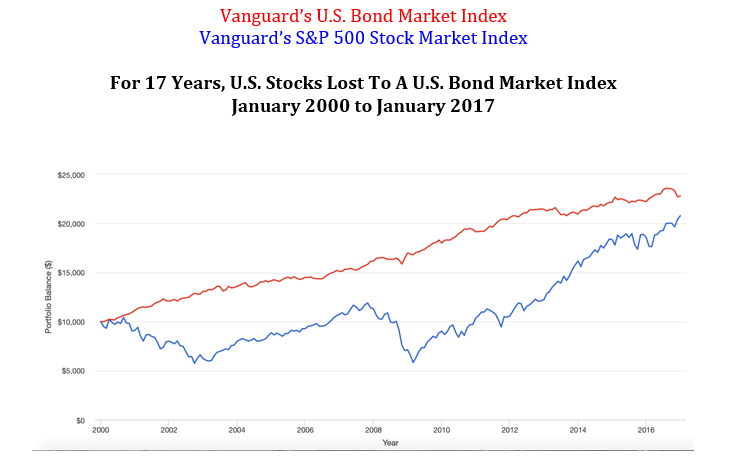
Andrew Hallam
08.06.2021
Vanguard’s Life Strategy ETFs Might Be The Best Funds For Europeans, Canadians in Europe, Asians, Africans, South Americans and Investors From The Middle East
_
Anyone who suggests, “the best investment funds for you,” better have a darn good reason. After all, with thousands of mutual funds and ETFs to choose from, claiming to know what’s “best” takes hubris, indeed. Financial magazines grab eyeballs with headlines such as, “The Best Funds To Buy Right Now!” As a financial journalist, that’s part of my bread and butter…but not in a way that you might think. I read magazines that recommend, “The best funds to buy,” and then I wait a couple of years. Without fail, the funds they recommend go on to underperform their benchmark indexes…after the magazine recommends them. Then I write my story, to poke a bit of fun.
Magazines count on something Steve Forbes one said. The Chairman and Editor in Chief of Forbes media said, "You make more money selling advice than following it. It's one of the things we count on in the magazine business -- along with the short memory of our readers."
Most “top recommendation” stories pick funds with strong recent track records. But that’s hardly scientific. The SPIVA Persistence Scorecard proves that top-performing funds during one time period rarely repeat their winning ways. That’s why, instead of picking funds based on predictions or a performance track record, investors should make decisions based on economic science. That science says the best odds of picking strong fund performers comes from selecting those with low expense ratio costs. Low-cost funds have higher probabilities of future success compared to high-cost funds. And the lowest cost funds of all are known as index funds or ETFs.
However, with so many index funds or ETFs to choose from, many investors are asking, “Which should I buy?” Most people look at past performance records and decide based on that. But again, that’s a bad move. An ETF focused on one economic sector might have recorded incredible returns over the past 10 years. But that sector could slump, after you’ve chosen to jump on board. For example, in 2006 and 2007, everyone wanted emerging market ETFs. Over the previous eight years, they had destroyed the returns of the U.S. stock market, as well as other developed world markets.
Investors, impressed by those returns, loaded up on emerging markets. Besides, emerging markets had a great story, too. GDP growth in countries like China, India, Brazil and Malaysia were far higher than in developed world markets. But, as is often the case, the first ends up last. Despite earning fabulous returns from 1999-2007, emerging markets began to sink after that. U.S. stocks (who would have believed it at the time?) went on to beat emerging market shares over the next 12 years.
Market sectors always end up surprising people. For example, almost nobody expected U.S. stocks to tread water for a dozen years, from 2000-2012. But they did…and over the 17-year period from January 2000 to January 2017, Vanguard’s U.S. bond market index beat Vanguard’s U.S. stock market index.

Source: portfoliovisualizer.com
So here’s my point: You don’t know what economic sectors will perform best over the next 5, 10, or 30 years. Nobody does. Nobody. Warren Buffett, himself, says stock market forecasters exist to make fortune-tellers look good. That’s why you shouldn’t try to forecast anything. Instead, build a portfolio of low-cost indexes that include exposure to global stocks and global bonds.
The easiest way to do this is with an all-in-one portfolio ETF, like a Vanguard Life Strategy Fund. Here are the boxes they check, with respect to economic science:
1. They are low-cost
While actively managed mutual funds carry costs as high as 2 percent per year, Vanguard’s Life Strategy Fund ETFs charge just 0.25 percent per year.
2. They are diversified
You never know what asset classes (stocks or bonds) will perform best this year or next. Nor do you know what geographic sector of stocks will shine over the next several years. That’s why you should diversify. Own a bit of everything. If there’s a party going on somewhere, you’ll have exposure to the celebrations with an all-in-one portfolio ETF.
3. They rebalance to maintain a consistent allocation
When one economic sector soars, it’s human nature to chase that sector with fresh money. In other words, when a particular stock market soars, plenty of investors want to add more funds to that market. Unfortunately, that’s a bad long-term strategy. After all, winners over one time period are often losers the next. Notice the random performances of international markets below. Vanguard’s Life Strategy Funds don’t act like dogs chasing tails. Instead of chasing past performance, they maintain a consistent allocation. To do so, they often sell components of what has done well, adding the proceeds to a sector that happens to be lagging. It’s a classic, buy low, sell high.
Simplicity
Vanguard’s Life Strategy Funds offer a single fund solution. In other words, if you buy one of these funds, you won’t have to buy anything else. You would never have to worry about the best time to rebalance. You would never have to worry about which fund or ETF you should buy in any given month.
Behavioral Advantage
Morningstar proves that investors in all-in-one funds typically outperform investors in individual ETFs. It’s true that buying single ETFs can cost a little less than an all-in-one ETF. Vanguard’s FTSE All-World FTSE UCITS ETF, for example, costs 0.22 percent per year, compared to 0.25 percent for Vanguard’s Life Strategy Fund ETFs. But complaining about an extra 0.03 percent per year in fees (heck, even complaining about an extra 0.15 percent) is like a marathoner whining about the weight of his eyebrows.
As I outlined in this story, research suggests the behavioral benefit of such funds means most investors in such products will easily beat the long-term performance of investors in individual ETFs, on an equal risk-adjusted basis.
The following all-in-one funds are priced in Euros. They don’t have much bias towards any single economic region. In other words, their exposure is fairly closely aligned to global market capitalization. In contrast, Vanguard UK’s Life Strategy Funds (described here) have slightly higher exposure to the UK stock and bond markets. Vanguard believes this reduces currency risk for UK-based investors. Similarly, Vanguard Australia and Vanguard Canada’s all-in-one portfolio ETFs (which I describe here) also have slight leans toward their respective markets, for much the same reason.
Based on European regulations, however, Canadians living in Europe are not able to buy ETFs listed on the Canadian stock exchange. For that reason, the Vanguard all-in-one Life Strategy ETFs below, (which trade on European exchanges) might be best for them.
Likewise, investors from countries without a first world developed market shouldn’t consider a home-country bias. That would involve too much risk. As such, the funds below might be perfect for Asians, Africans, South Americans, Central Americans and investors from the Middle East.
Europeans should also give them serious consideration. These funds don’t have a European lean. Instead, they have a very slight bias (beyond global market capitalization) towards U.S. stocks and U.S. bonds. But they are priced in euros, which makes them even more convenient if that currency reflects your income. Dividends and interest also get reinvested automatically.
As for the future, these will never be the best performing funds over the next 10, 20 or 30 years. Neither you, nor anyone, can predict which funds will be. However, on a risk-adjusted basis, these will be near the top. That isn’t based on a prediction. Instead, it’s based on economic science.
What’s more, these all-in-one portfolios are easy to manage. Pick one fund from the selection below. The funds with lower equity (stock market) exposure will be more stable. But over long periods of time, they will earn lower returns (although not every year) compared to the all-in-one funds with higher stock market exposure. Choose your fund based on your tolerance for risk, and just keep adding money.
Approximate Fund Allocations
| Fund Composition | Vanguard Life Strategy 20% Equity UCITS ETF EUR | Vanguard Life Strategy 40% Equity UCITS ETF EUR | Vanguard Life Strategy 60% Equity UCITS ETF EUR | Vanguard Life Strategy 80% Equity UCITS ETF EUR |
|---|---|---|---|---|
*Global Stocks | 20% | 40% | 60% | 80% |
*Global Bonds | 80% | 60% | 40% | 20% |
|
|
|
|
|
Fund Purchase Codes | IE00BMVB5K07 | IE00BMVB5M21 | IE00BMVB5P51 | IE00BMVB5R75 |
Xetra | V20A | V40A | V60A | V80A |
*Slight global market capitalization risk is assumed with these funds because they have a slightly higher exposure to U.S. stocks and U.S. bonds than are warranted by global capitalization size. For example, global market capitalization is about 53% U.S. stocks and 47% international stocks, but the equity portion of these funds is roughly 60% U.S stocks and 40% international stocks. You can see the specific breakdowns at the links above.
Source: Vanguard
Andrew Hallam is a Digital Nomad. He’s the author of the bestseller, Millionaire Teacher and Millionaire Expat: How To Build Wealth Living Overseas
Swissquote Bank Europe S.A. accepts no responsibility for the content of this report and makes no warranty as to its accuracy of completeness. This report is not intended to be financial advice, or a recommendation for any investment or investment strategy. The information is prepared for general information only, and as such, the specific needs, investment objectives or financial situation of any particular user have not been taken into consideration. Opinions expressed are those of the author, not Swissquote Bank Europe and Swissquote Bank Europe accepts no liability for any loss caused by the use of this information. This report contains information produced by a third party that has been remunerated by Swissquote Bank Europe.
Please note the value of investments can go down as well as up, and you may not get back all the money that you invest. Past performance is no guarantee of future results.

